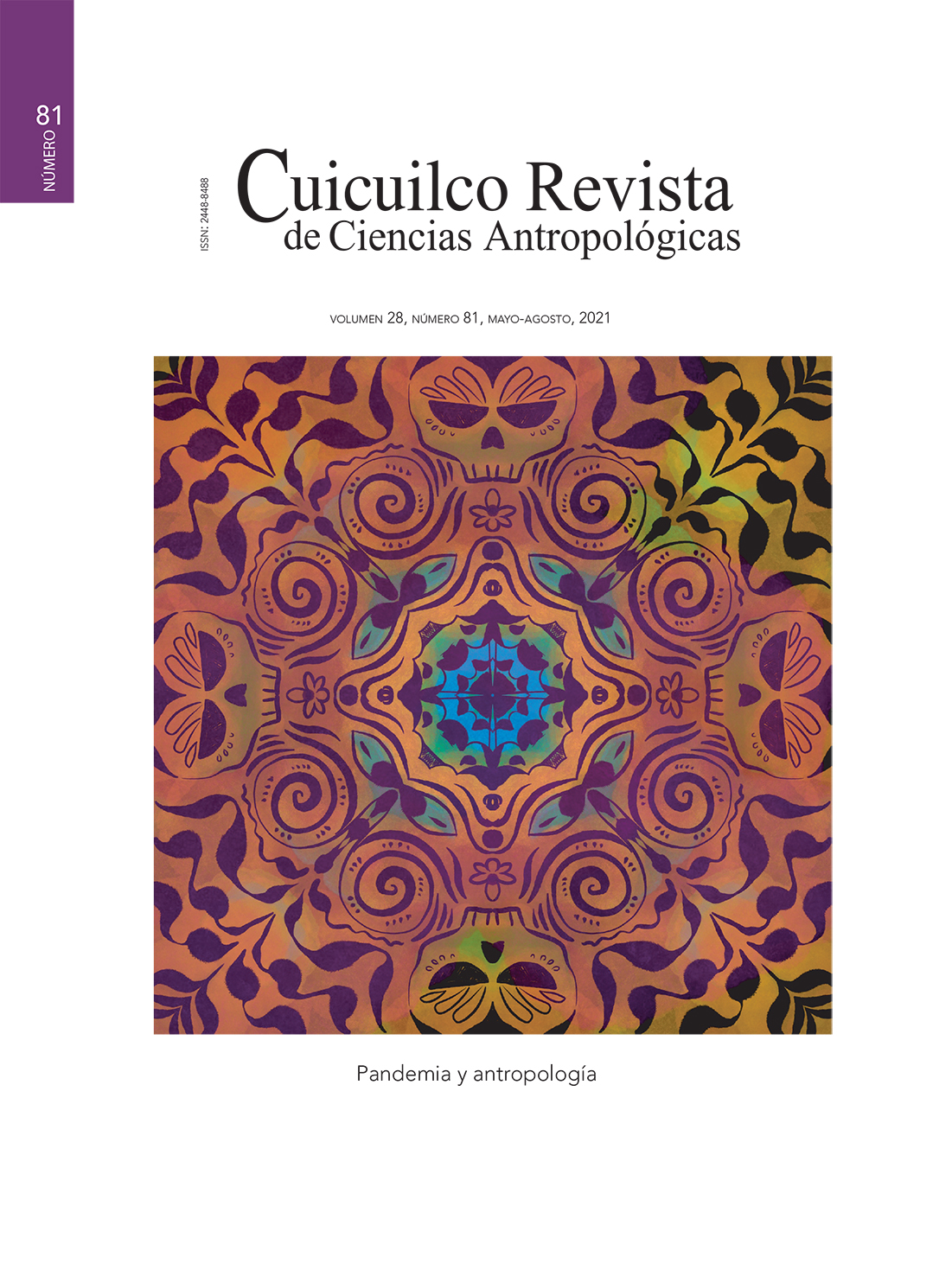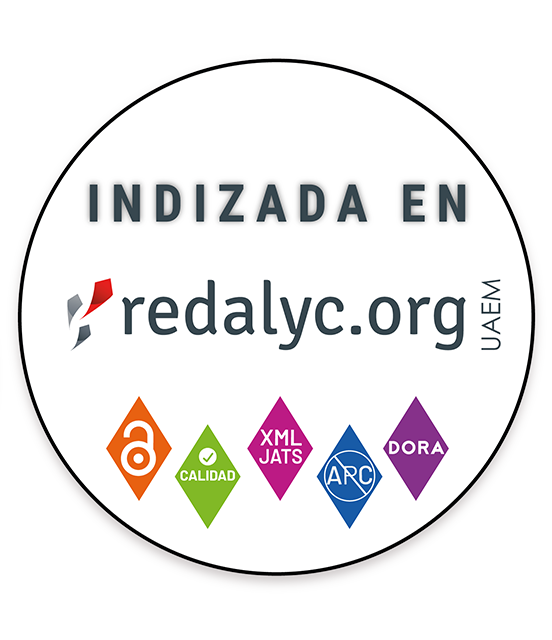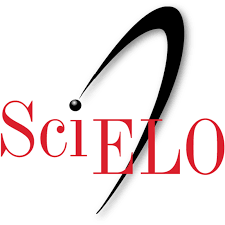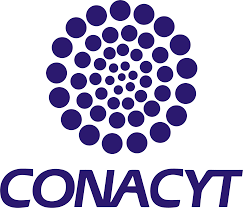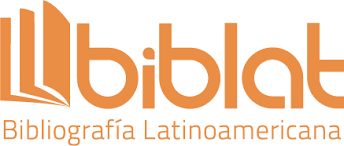Paleogenómica y bioarqueología en México
Palabras clave:
ADN antiguo, paleogenómica, restos esqueléticos, ética, sustentabilidad.Resumen
El ADN antiguo se ha convertido en una herramienta importante de la investigación bioarqueológica. Los avances en métodos de laboratorio y secuenciación han hecho posible la recuperación de genomas completos a partir de restos humanos antiguos. La aplicación de los métodos paleogenómicos al estudio del abundante patrimonio cultural de México representa un gran potencial para investigar diversos escenarios de interés bioarqueológico, como lo son; el estudio de la diversidad poblacional humana antigua y la paleopatología, entre otros. Sin embargo, el estudio del ADN antiguo es inherentemente destructivo y tiene consecuencias irreversibles para el manejo sustentable de los recursos culturales. En este artículo presentamos un breve resumen de la historia de la investigación con ADN antiguo y sus aplicaciones a la bioarqueología mexicana. Discutimos algunas preocupaciones éticas del muestreo destructivo y proveemos recomendaciones para conducir investigación ética y sustentable con restos esqueléticos humanos de contextos mexicanos y latinoamericanos. Concluimos con una reflexión sobre el futuro del campo de la paleogenómica en México.
Descargas
Citas
Aguirre Samudio, Ana J., Blanca Z. González Sobrino, Brenda A. Álvarez Sandoval et al. 2017 Genetic history of classic period Teotihuacan burials in central Mexico. Revista Argentina de Antropología Biológica, 19: 1-14.
Álvarez Sandoval, Brenda A., Linda R. Manzanilla y Rafael Montiel. 2014 Sex determination in highly fragmented human DNA by high-resolution melting (hrm) analysis. PLoS One, 9: e104629.
Álvarez Sandoval, Brenda A., Linda R. Manzanilla, Mercedes González Ruiz et al. 2015 Genetic evidence supports the multiethnic character of Teopancazco, a neighborhood center of Teotihuacan, Mexico (AD 200-600). PLoS One, 10: e0132371.
Arbour, Laura y Doris Cook. 2006 DNA on loan: Issues to consider when carrying out genetic research with aboriginal families and communities. Community Genetics, 9: 153-60.
Austin, Rita M., Sabrina B. Sholts, Lashanda Williams et al. 2019 Opinion: To curate the molecular past, museums need a carefully considered set of best practices. Proceedings of the National Academy of Sciences, 116: 1471-1474.
Ávila-Arcos, María C. 2018 Wielding new genomic tools wisely. Science, 360: 274.
Bardill, Jessica, Alyssa C. Bader, Nanibaa A. Garrison et al. 2018 Advancing the ethics of paleogenomics. Science, 360: 384-385.
Barquera, Rodrigo, Thiseas C. Lamnidis, Aditya Kumar Lankapalli et al. 2020 Origin and health status of first-generation Africans from early colonial Mexico. Current Biology, 3: 2078-2091.
Bos, Kirsten I., Denise Ku?hnert, Alexander Herbig et al. 2019 Paleomicrobiology: Diagnosis and Evolution of Ancient Pathogens. Annual Review of Microbiology, 73: 639-666.
Bravo-López, Miriam, Viridiana Villa-Islas, Carolina Rocha Arriaga et al. 2020 Paleogenomic insights into the red complex bacteria Tanarella forsythia in Pre-Hispanic and Colonial individuals from Mexico. Philosophical Transactions of the Royal Society B, 375: 20190580.
Bravo López, Miriam. 2021 Estudio paleogenómico de patógenos humanos en población prehispánica y colonial de México, tesis de doctorado. Universidad Nacional Autónoma de México. Querétaro.
Briggs, Adrian W., Udo Stenzel, Philip L. F. Johnson et al. 2007 Patterns of damage in genomic DNA sequences from a Neandertal. Proceedings of the National Academy of Sciences, 104: 14616-14621.
Chatters, James C., Douglas J. Kennett, Yemane Asmerom et al. 2014 Late Pleistocene human skeleton and mtdna link Paleoamericans and modern Native Americans. Science, 344: 750-754.
Claw, Katrina G., Matthew Z. Anderson, Rene L. Begay et al. 2018 A framework for enhancing ethical genomic research with Indigenous communities. Nature Communications, 9: 2957.
Cooper, Alan y Hendrik Poinar. 2000 Ancient dna: Do it right or not at all. Science, 289: 1139.
Cucina, Andrea. 2013 Ética en bioarqueología. Temas Antropológicos, 35 (2): 149-170.
Dabney, Jessse, Michael Knapp, Isabelle Glocke et al. 2013 Complete mitochondrial genome sequence of a Middle Pleistocene cave bear reconstructed from ultrashort dna fragments. Proceedings of the National Academy of Sciences, 110: 15758-15763.
Damgaard, Peter B., Ashot Margaryan, Hannes Schroeder et al. 2015 Improving access to endogenous dna in ancient bones and teeth. Scientific Reports, 5: 11184.
De la Cruz, Isabel, Angélica González-Oliver, Brian M. Kemp et al. 2008 Sex identification of children sacrificed to the ancient Aztec rain gods in Tlatelolco. Current Anthropology, 9: 519-526.
Dirección General de Comunicación Social, UNAM 2018 Estudian en la unam diversidad genética de pueblos prehispánicos de México. Boletín UNAM DGCS 289, mayo. https://www.dgcs.unam.mx/boletin/bdboletin/2018_289.html Consultado el 2 de enero de 2020.
Doran, Glen H., David N. Dickel, William E. Ballinger et al. 1986 Anatomical, cellular and molecular analysis of 8 000-yr-old human brain tissue from the Windover archaeological site. Nature, 323: 803-806.
Downes, Stephen M. 2019 The role of ancient dna research in archaeology. Topoi, July: 1-9.
Epp, Laura, Heike H. Zimmerman, Kathleen R. Stoof-Leichsenring. 2019 Sampling and extraction of Ancient dna from sediments, en Ancient DNA: Methods in Molecular Biology, 1963, Beth Shapiro, Peter Heintzman, Michael Hofreiter et al. (eds.) Humana Press. California: 31-44.
Fox, Keolu y John Hawks. 2019 Use ancient remains more wisely. Nature, 572: 581-583.
Gamba, Cristina, Eppie R. Jones, Matthew D. Teasdale et al. 2014 Genome flux and stasis in a five millennium transect of European prehistory. Nature Communications, 5: 5257.
Garfias Morales, Ernesto. 2016 Búsqueda e identificación de dna de Treponema pallidum en restos óseos humanos prehispánicos de México, que muestran lesiones sugerentes de sífilis, tesis de maestría. UNAM. México.
Giacani, Lorenzo y Sheila A. Lukehart. 2014 The endemic treponematoses. Clinical Microbiology Reviews, 27: 89-115.
Giles, Richard E., Hugues Blanc, Howard M. Cann et al. 1980 Maternal inheritance of human mitochondrial dna. Proceedings of the National Academy of Sciences, 77: 6715-6719.
Glocke, Isabelle y Matthias Meyer. 2017 Extending the spectrum of dna sequences retrieved from ancient bones and teeth. Genome Research, 27: 1230-1237.
González José, Rolando, Antonio González Martín, Miquel Hernández et al. 2003 Craniometric evidence for Palaeoamerican survival in Baja California. Nature, 425: 62-65.
González Oliver, Angélica, Lourdes Márquez Morfín, José C. Jiménez et al. 2001 Founding American mitochondrial dna lineages in ancient Maya from Xcaret, Quintana Roo. American Journal of Physical Anthropology, 116: 230-235.
González Sobrino, Blanca Zoila y Ana Julia Aguirre Samudio. 2011 El ADN antiguo de las colecciones óseas de México, en Colecciones Esqueléticas humanas en México: Excavación, catalogación y aspectos normativos, Lourdes Márquez Morfin y Allan Ortega Muñoz (eds.). INAH. México: 113-128.
Goodwin, Sara., John. D. Mcpherson, y W. Richard Mccombie. 2016 Coming of age: Ten years of next-generation sequencing technologies. Nature Review Genetics, 17: 333-351.
Green, Richard E., Johannes Krause, Adrian W. Briggs et al. 2010 A draft sequence of the Neandertal genome. Science, 328: 710-722.
Guglielmi, Giorgia. 2019 Facing up to genomic injustice. Nature, 568: 290-293.
Guzmán Solís, Axel A., Daniel Blanco Melo, Viridiana Villa Islas et al. 2020 Ancient viral genomes reveal introduction of hbv and b19v to Mexico during the transatlantic slave trade. bioRxiv, https://doi.org/10.1101/2020.06.05.137083 Consultado el 4 de abril de 2021.
Hackett, Cecil J. 1976 Diagnostic criteria of syphilis, yaws, and treponarid (treponematoses) and some other diseases in dry bones (for the use in osteo-archaeology), Berlin, Springer-
Verlag.
Hagelberg, Erika y John B. Clegg. 1993 Genetic polymorphisms in prehistoric Pacific islanders determined by analysis of ancient bone DNA. Proceedings of the Royal Society B: Biological Sciences, 252: 163-170.
Hagelberg, Erika, Bryan Sykes y Robert Hedges. 1989 Ancient bone DNA amplified. Nature, 342: 485.
Hagelberg, Erika, Michael Hofreiter y Christine Keyser. 2015 Ancient DNA: The first three decades. Philosophical Transactions of the Royal Society b, 370: 20130371.
Haller, Magdalena, Kimberly Callan, Julian Susat et al. 2021 Mass burial genomics reveals outbreak of enteric paratyphoid fever in the Late Medieval trade city Lu?beck. iScience, enero: https://doi.org/10.2139/ssrn.3762113 Consultado el 4 de abril de 2021 [pdf].
Hansen, Henrik B., Peter B. Damgaard, Ashot Margaryan et al. 2017 Comparing ancient DNA preservation in petrous bone and tooth cementum. PLoS One, 12: e0170940.
Harris, Edward C. 2006 Archaeology and the ethics of scientific destruction, en Between Dirt and Discussion, Steven Archer y Kevin Bartoy (eds.). Springer. Boston, MA: 141-150.
Higuchi, Russell, Barbara Bowman, Mary Freiberger et al. 1984 DNA sequences from the quagga, an extinct member of the horse family. Nature, 312: 282-284.
Hofreiter, Michael, Johanna L. A. Paijmans, Helen Goodchild et al. 2015 The future of ancient dna: Technical advances and conceptual shifts. Bioessays, 37: 284-93.
Horn, Susanne 2012 Target enrichment via dna hybridization capture, en Ancient dna: Methods and Protocols, Beth Shapiro y Michael Hofreiter (eds.) Humana Press. California: 177-188.
Hunnius, Tanya E. Von, Dongya Yang, Barry Eng et al. 2007 Digging deeper into the limits of ancient dna research on syphilis. Journal of Archaeological Science, 34: 2091-2100.
Instituto de Antropología e Historia (INAH). 2017 INAH y Langebio impulsan estudio arqueogenético de Cañada de la Virgen. INAH Boletín, 313, septiembre. https://www.inah.gob.mx/boletines/6496-inah-y langebio-impulsan-estudio-arqueogenetico-de-canada-de-la-virgen Consultado el 2 de enero de 2020. 2019 ENAH busca fortalecer estudios de genómica en materiales biológicos antiguos. INAH Boletín, 123, mayo. https://www.inah.gob.mx/boletines/8102-enah-busca-fortalecer-estudios-de-genomica-en-materiales-biologicosantiguos Consultado el 2 de enero de 2020. 2019 Lineamientos Generales para el Manejo y Resguardo de Restos Humanos. Secretaría de Cultura, INAH. https://www.normateca.inah.gob.mx/pdf/01574791311.PDF Consultado el 21 de marzo de 2021.
Jensen, Theis Z. T., Jonas Niemann, Katrine Højholt Iversen et al. 2019 A 5 700 year-old human genome and oral microbiome from chewed birch pitch. Nature Communications, 10: 5520.
Kemp, Brian, Andrés Reséndez, Juan Alberto Román Berrelleza et al. 2005 An analysis of ancient Aztec mfdna from Tlatelolco: Pre-Columbian relations and the spread of Uto-Aztecan, en Biomolecular Archaeology: Genetic Approaches to the past, David M. Reed (ed.). Center for Archaeological Investigation, Occasional Paper, 32. Illinois: 22-42.
Key, Feliz M., Cosimo Posth, Luis R. Esquivel-Gómez et al. 2020 Emergence of human-adapted Salmonella enteric is linked to the Neolithization process. Nature Ecology & Evolution, 4: 324-333.
Krause, Johannes, Adrian W. Briggs, Martin Kircher et al. 2010 A complete mtdna genome of an early modern human from Kostenki, Russia. Current Biology, 20: 231-236.
Krings, Matthias, Anne C. Stone, Ralf W. Schmitz et al. 1997 Neandertal dna sequences and the origin of modern humans. Cell, 90: 19-30.
Ley Federal. 1975 Ley Federal sobre Monumentos y Zonas Arqueológicos, Artísticos e Históricos. Diario Oficial de la Federación, 6 de mayo de 1972. México. https://
www.senado.gob.mx/comisiones/cultura/docs/Ley_FMZ.pdf Consultado el 21 de marzo de 2021.
Llamas, Bastien, Guido Valverde, Lars Fehren-Schmitz et al. 2017 From the field to the laboratory: Controlling DNA contamination in human ancient DNA research in the high throughput sequencing era. star: Science & Technology of Archaeological Research, 3: 1-14.
López Caballero, Paula. 2009 The effort of othering. Anthropological Theory, 9 (2): 171-187.
Mansilla, Josefina y Carmen M. Pijoan. 1995 Brief communication: A case of congenital syphilis during the colonial period in Mexico City. American Journal of Physical Anthropology, 97: 187-195. 2005 Treponematosis in ancient Mexico, en The myth of syphillis: The natural history of treponematosis in North America, Mary Lucas Powell y Della Collins Cook (eds.) University Press of Florida. Gainesville: 368-385.
Manzanilla, Linda R. 2015 Cooperation and tensions in multiethnic corporate societies using Teotihuacan, Central Mexico, as a case study. Proceedings of the National Academy of Sciences, 112: 9210-9215.
Margaryan, Ashot, Henrik B. Hansen, Simon Rasmussen et al. 2018 Ancient pathogen DNA in human teeth and petrous bones. Ecology and Evolution, 8: 3534-3542.
Márquez Morfin, Lourdes. 1999 Ética y Bioantropología. Estudios de Antropología Biológica, 9, 47–57.
Márquez Morfín, Lourdes y Margarita Meza Manzanilla. 2015 Sífilis en la Ciudad de México: Análisis osteopatológico. Cuicuilco, 63: 89-129.
Martínez Mora, Estela, Hernández Espinoza, Patricia O. y Córdova Tello, Guillermo. 2014 La presencia de tuberculosis vertebral en Chalchihuites, Zacatecas: una explicación desde la bioarqueología. Boletín de Antropología Universidad de Antioquía, 29: 11-27.
Mata Míguez, Jaime, Lisa Overholtzer, Enrique Rodríguez Alegría et al. 2012 The genetic impact of Aztec imperialism: Ancient mitochondrial DNA evidence from Xaltocan, Mexico. American Journal of Physical Anthropology, 149: 504-516.
Matisoo-Smith, Elizabeth. 2019 Working with Indigenous communities in genomic research-A Pacificperspective. The SAA Archaeological Record, 19: 14-19.
Merriwether, D. Andrew., David M. Reed y Robert E. Ferell. 1997 Ancient and contemporary mitochondrial variation in the Maya, en Bones of the Ancestors: Recent Studies of Ancient Maya Skeletons, Stephen L. Whittington y David M. Reed (eds.) Smithsonian Institution Press: 208-217.
Meyer, Matthias, Juan-Luis Arsuaga, Cesare De Filippo et al. 2016 Nuclear DNA sequences from the Middle Pleistocene Sima de los Huesos hominins. Nature, 531: 504-507.
Mizuno, Fuzuki, Masahiko Kumagai, Kunihiko Kurosaki et al. 2017 Imputation approach for deducing a complete mitogenome sequence from low-depth-coverage next-generation sequencing data: Application to ancient remains from the Moon Pyramid, Mexico. Journal of Human Genetics, 62: 631-635.
Molto, J. El. 2005 Endemic treponematosis in pre- and post-contact Pericue of the Cape Region of Baja California Sur, en The myth of syphillis: The natural history of treponematosis in North America, Mary Lucas Powell y Della Collins Cook (eds.) University Press of Florida. Gainesville: 350-367.
Morales Arce, Ana Y., Courtney A. Hofman, Ana T. Duggan et al. 2017 Successful reconstruction of whole mitochondrial genomes from ancient Central America and Mexico. Scientific Reports, 7: 18100.
Morales Arce, Ana Y., Geoffrey Mccafferty, Jessica Hand et al. 2019 Ancient mitochondrial DNA and population dynamics in postclassic Central Mexico: Tlatelolco (ad 1325-1520) and Cholula (ad 900-1350). Archaeological and Anthropological Sciences, 11: 3459-3475.
Müller, Romy, Charlotte A. Roberts y Terence A. Brown 2015 Complications in the study of ancient tuberculosis: non-specificity of is6110 PCRS. Science and Technology of Archaeological Research, 1 (1): 1-8.
Mulligan, Connie J., Steven J. Norris y Sheila A. Lukehart. 2008 Molecular studies in Treponema pallidum evolution: Toward clarity? PLoS Neglected Tropical Diseases, 2: e184.
Noordhoek, Gerda T., Brigitte Wieles, Jaap J. van der Siuis et al.. 1990 Polymerase chain reaction and synthetic dna probes: A means of distinguishing the causative agents of syphilis and yaws? Infection and Immunity, 58: 2011-2013.
Ochoa Lugo, Mirna Isabel, María de Lourdes Muñoz, Gerardo Pérez Ramírez et al. 2016 Genetic affiliation of pre-hispanic and contemporary Mayas through maternal lineage. Human Biology, 88: 136-167.
Orlando, Ludovic, Robin Allaby, Pontus Skoglund et al. 2021 Ancient DNA analysis. Nature Reviews Methods Primer, 1: 1-26.
Ortega Muñoz, Allan 2010 Etnografía de las localidades aledañas a las zonas arqueológicas abiertas al público. Zona Sur. Relaciones de economía, identidad, hegemonía e impacto del desarrollo turístico, Informe técnico (inédito), Chetumal, México, Centro INAH Quintana Roo. 2011 Los restos de nuestros antepasados en la construcción del patrimonio cultural tangible y la identidad de México, en Colecciones esqueléticas humanas
en México. Excavación, catalogación y aspectos normativos, Lourdes Márquez Morfín y Allan Ortega Muñoz (eds.). INAH. México: 29-50.
Ortega, Allan y Vera Tiesler. 2011 La antropología física y la bioarqueología: Diálogos antitéticos entre sus actores. Estudios de Antropología Biológica, 15: 399-413.
Pääbo, Svante. 1985 Molecular cloning of ancient Egyptian mummy dna. Nature, 314: 644-645.
Ancient dna: Extraction, characterization, molecular cloning, and enzymatic amplification. Proceedings of the National Academy of Sciences, 86: 1939-1943.
Peltzer, Alexander, Gu?nter Jäger, Alexander Herbig et al. 2016 eager: Efficient ancient genome reconstruction. Genome Biology, 17 (60).
Phillips, Nicky. 2019 Bringing home the ancestors. Nature, 568: 294-297.
Pineda, Carlos, Josefina Mansilla Lory, Manuel Martínez Lavín et al. 2009 Rheumatic diseases in the ancient Americas: the skeletal manifestations of treponematoses. Journal of Clinical Rheumatology, 15: 280-283.
Pinhasi, Ron, Daniel Fernandes, Kendra Sirak et al. 2015 Optimal ancient dna yields from the inner ear part of the human petrous bone. PLoS One, 10: e0129102.
Posth, Cosimo, Nathan Nakatsuka, Iosif Lazaridis et al. 2018 Reconstructing the deep population history of Central and South America. Cell, 175: 1-13.
Prendergast, Mary E. y Elizabeth Sawchuk. 2018 Boots on the ground in Africa’s ancient dna “revolution”: archaeological perspectives on ethics and best practices. Antiquity, 92: 803-815.
Raghavan, Maanasa, Matthias Steinru?cken, Kelley Harris et al. 2015 Genomic evidence for the Pleistocene and recent population history of Native Americans. Science, 349: aab3884.
Rasmussen, Morten, Yingrui Li, Stinus Lindgreen et al. 2010 Ancient human genome sequence of an extinct Palaeo-Eskimo. Nature, 463: 757-762.
Reich, David, Richard E. Green, Martin Kircher et al. 2010 Genetic history of an archaic hominin group from Denisova Cave in Siberia. Nature, 468: 1053.
Roca-Rada, Xavier, Yassine Souilmi, João C. Teixeira. 2020 Ancient dna studies in Pre-Columbian Mesoamerica. Genes, 11 (1346).
Román Berrelleza, Juan Alberto, Andrés Saúl Alcántara Salinas, Angélica González Oliver. 2015 Identificación de la presencia de adn antiguo en restos óseos de la cultura capacha de Colima. Diario de Campo, 10-11: 94-104.
Saiki, Randall H., David H. Gelfand, Susanne Stoffel et al. 1988 Primer-directed enzymatic amplification of DNA with a thermostable DNA polymerase. Science, 239: 487-491.
Salas Cuesta, María Elena. 1982 La población de México-Tenochtitlan: Estudio de osteología antropológica. INAH. México.
Sánchez-Quinto, Federico, Helena Malmström, Maddalena Fraser et al. 2019 Megalithic tombs in western and northern Neolithic Europe were linked to a kindred society. Proceedings of the National Academy of Sciences, 19: 9469-9474.
Sanger, Frederick, Steve Nicklen y Alan R. Coulson. 1977 DNA sequencing with chain-terminating inhibitors. Proceedings of the National Academy of Sciences, 74: 5463-5467.
Sarkissian, Clio Der, Morten E. Allentoft, María C. Ávila-Arcos et al. 2015 Ancient genomics. Philosophical Transactions of the Royal Society B, 370: 20130387.
Schuenemann, Verena J., Aditya Kumar Lankapalli, Rodrigo Barquera et al. 2018 Historic Treponema pallidum genomes from Colonial Mexico retrieved from archaeological remains. PLoS Neglected Tropical Diseases, 12: e0006447.
Slatkin, Montgomery. 2016 Statistical methods for analyzing ancient DNA from hominins. Current Opinion in Genetics & Development, 41: 72-76.
Solórzano, Eduvigis, Nancy Díaz, Rafael Montiel et al. 2011 Análisis del ADN mitocondrial de tres series antiguas mexicanas. Estudios de Antropología Biológica, XIV: 243-259.
Spores, Ronald y Nelly Robles García. 2007 A prehispanic (postclassic) capital center in colonial transition: Excavations at Yucundaa Pueblo Viejo de Teposcolula, Oaxaca, México. Latin American Antiquity, 18: 333-353.
Steinbock, R. Ted. 1976 Paleopathological diagnosis and interpretations: bone diseases in ancient human populations. Springfield, Charles C. Thomas.
Steffani Vallejo, José L. 2014 Detección molecular de Mycobacterium tuberculosis en muestras arqueológicas precolombinas y coloniales mexicanas y españolas, tesis de licenciatura. Universidad Autónoma de Nuevo León. Monterrey.
Stone, Anne C. y Mark Stoneking. 1993 Ancient DNA from a pre-Columbian Amerindian population. American Journal of Physical Anthropology, 92: 463-471.
Tackney, Justin C. y Jennifer A. Raff. 2019 A different way: Perspectives on human genetic research from the Arctic. The SAA Archaeological Record, 19: 20-25.
Vågene, Ashild J., Alexander Herbig, Michael G. Campana et al.
Salmonella enterica genomes from victims of a major sixteenth-century epidemic in Mexico. Nature Ecology and Evolution, 2: 520-528.
Vallebueno-Estrada, Miguel, Isaac Rodríguez-Arévalo, Alejandra Rougon-Cardoso et al. 2016 The earliest maize from San Marcos Tehuacán is a partial domesticate with genomic evidence of inbreeding. Proceedings of the National Academy of Sciences, 113: 14151-14156.
Valk, Tom van der, Patricia Pe?nerová, David Díez-del-Molino et al. 2021 Million-year-old dna sheds light on the genomic history of mammoths. Nature, 591: 265-269.
Vargas Sanders, Rocío. 1989 Material genético en restos óseos humanos: Estudios moleculares en tejidos antiguos. Información Científica y Tecnológica, 11: 19-21.
Vargas Sanders, Rocío, Rosalba Sánchez Alcalá. 1995 Material genético en restos óseos humanos. Estudios de Antropología Biológica, 5: 199-217.
Vargas Sanders, Rocío, Z. Salazar, María C. Enríquez. 1996 Ancient nucleic acids in Prehispanic Mexican populations, en Archaeological Chemistry, Mary Virginia Orna (ed.) American Chemical Society ACS Symposium Series American. Washington, DC: 391-400.
Verdugo, Cristina, Kimberly Zhu, Michael Prout et al. 2020 Implications of age and sex determinations of ancient Maya sacrificial victims at Midnight Terror Cave. International Journal Osteoarchaeology, 30: 458-568.
Wade, Lizzie. 2018 Bridging the gap. Science, 361: 1304-1307.
Wang, Gui Hai, Lu Chuan Chung. 1981 Isolation and identification of nucleic acids of the liver from a corpse from the Changsha Han tomb. Sheng Wu Hua Xue and Sheng Wu Li Jin Zhan, 39: 70-75.
Warinner, Christina, Nelly Robles García, Ronald Spores et al. 2012 Disease, demography and diet in early colonial New Spain: Investigation of a sixteenth-century Mixtec cemetery at Teposcolula Yucundaa. Latin American Antiquity, 23: 467-489.
Warinner, Christina, Camilla Speller y Matthew J. Collins. 2015 A new era in palaeomicrobiology: Prospects for ancient dental calculus as a long-term record of the human oral microbiome. Philosophical Transactions of the Royal Society B, 370: 20130376.
Whittaker, Catherine. 2020 Aztecs are not indigenous: Anthropology and the politics of indigeneity. Annals of Anthropological Practice, 44 (2): 173-179.
Woodward, Scott R., Nathan Weyand, y Mark Bunnell. 1994 DNA sequence from Cretaceous period bone fragments. Science, 266: 1229- 1232.
Xavier, Catarina, Mayra Eduardoff, Barbara Bertoglio et al. 2021 Evaluation of DNA extraction methods developed for forensic and ancient DNA applications using bone samples of different age. Genes 12: 1-16.
Zhang, Sara. 2018 A new clue to the mystery disease that once killed most of Mexico. The Atlantic, 15 de enero. https://www.theatlantic.com/science/archive/2018/01/salmonella-cocoliztli-mexico/550310/ Consultado el 24 de marzo de 2020.
Zhou, Zhemin, Inge Lundstrom, Alicia Tran-Dien et al. 2018 Pan-genome analysis of ancient and modern Salmonella enterica demonstrates genomic stability of the invasive Para C lineage for millennia. Current Biology, 28: 2420-2428 e10.
Publicado
Versiones
- 2022-02-13 (2)
- 2021-09-30 (1)

